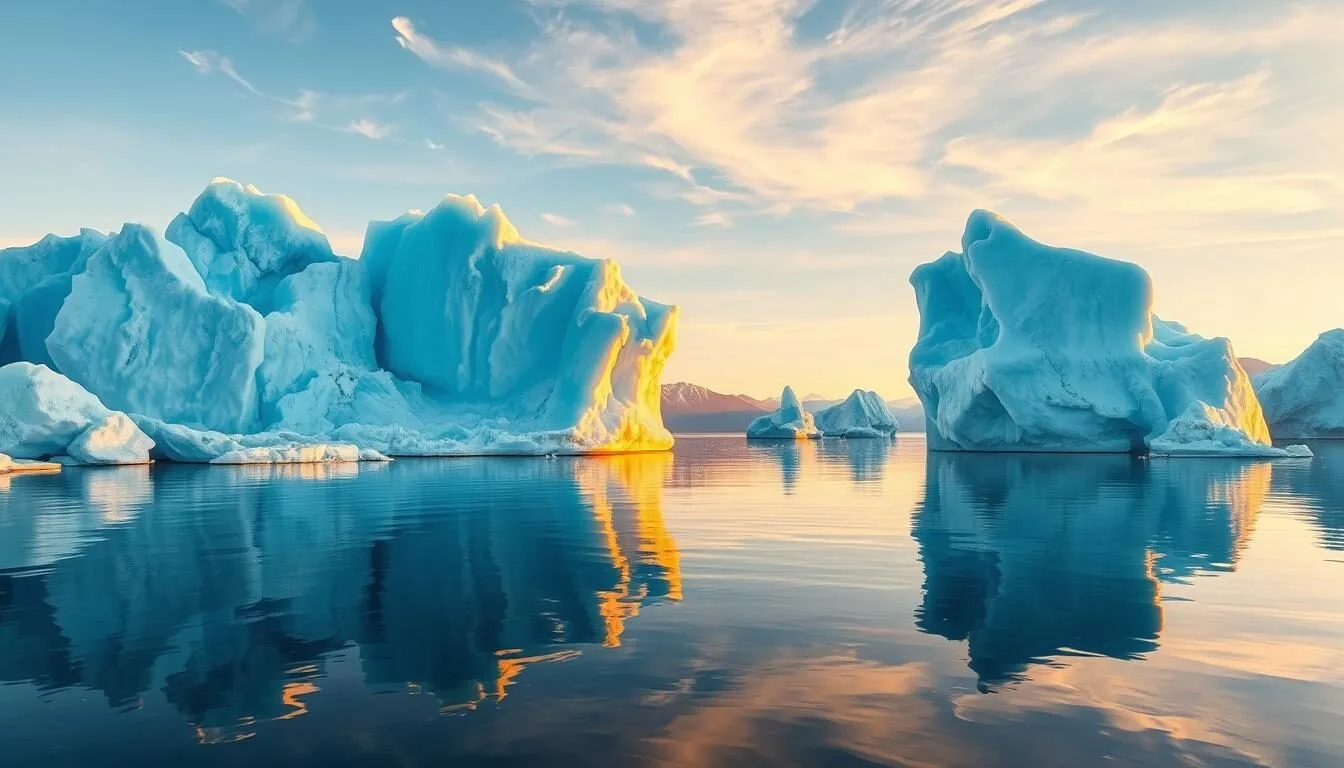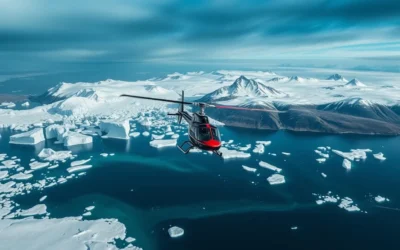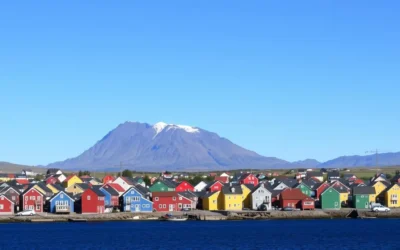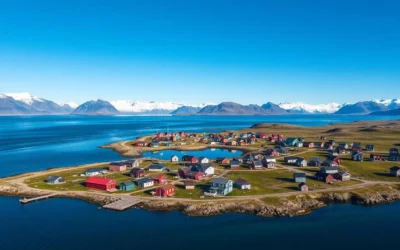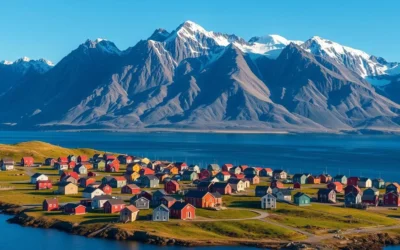Did you know that Greenland experiences more than 60 days of midnight sun above the Arctic Circle, yet receives less annual precipitation than the Sahara Desert? This fascinating contradiction is just one of many that make Greenland a meteorological marvel and a challenging destination to plan for weather-wise. With temperatures that can plunge to -50°C (-58°F) in winter and coastal areas that remain surprisingly mild in summer, timing your visit is everything.
Getting There & Planning Your Journey
Greenland has no direct international flights from most countries. The primary gateways are through Copenhagen, Denmark, or Reykjavik, Iceland. Air Greenland and Icelandair operate these routes, with flights typically landing in Kangerlussuaq, Nuuk, or Ilulissat. Flight schedules vary significantly by season, with more options available during summer months (June-August).
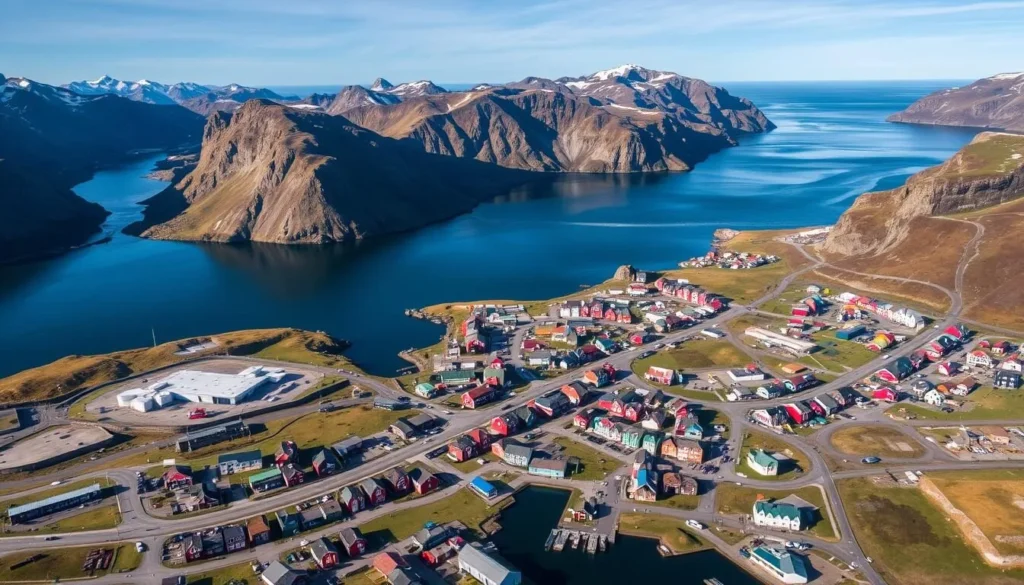
Planning ahead is crucial, especially if visiting during peak summer season. Winter travelers should be aware that many destinations become inaccessible, and activities are limited by daylight hours and weather conditions.
Ready to Start Your Greenland Adventure?
Find the best flight options to Greenland’s main airports with flexible booking options.
Best Time to Visit & Weather Tips
Greenland’s weather varies dramatically by region and season. The coastal areas experience milder conditions than inland regions, and the north is significantly colder than the south. Understanding these patterns is essential for planning your trip.
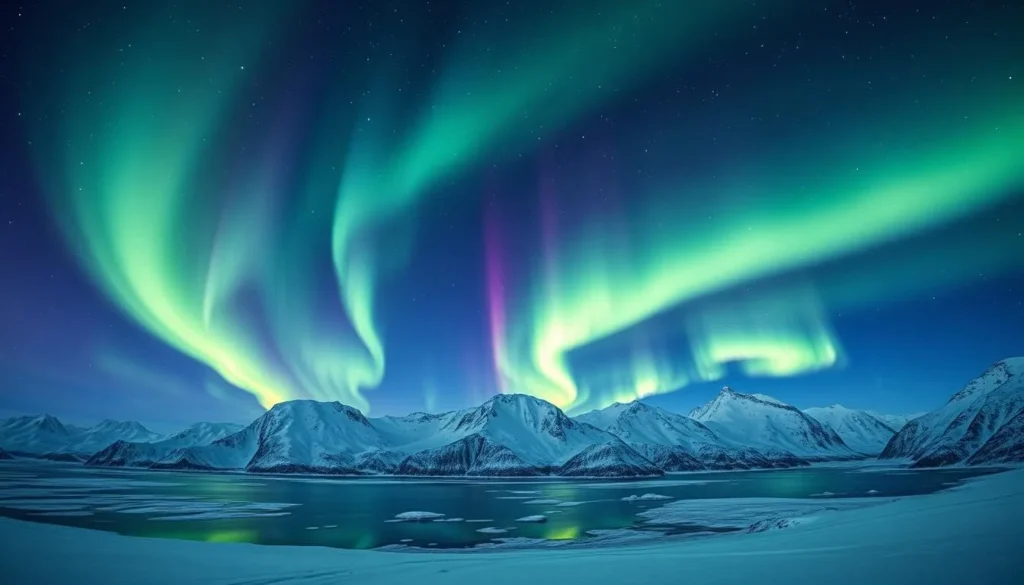
Winter (December-March)
Weather Overview: Extremely cold with temperatures ranging from -10°C to -35°C (14°F to -31°F). Polar night occurs above the Arctic Circle with 0-4 hours of daylight.
What to Wear: Extreme cold weather gear, multiple thermal layers, insulated boots, arctic-grade parka, face protection.
Things to Do: Northern Lights viewing, dog sledding, snowmobiling, ice fishing, winter photography.
Pros
- Spectacular Northern Lights displays
- Authentic Arctic experiences
- Fewer tourists
Cons
- Extreme cold temperatures
- Limited daylight hours
- Reduced accessibility to many regions
Spring (April-May)
Weather Overview: Transitional season with temperatures from -5°C to 5°C (23°F to 41°F). Daylight hours increase rapidly, with up to 20 hours by late May.
What to Wear: Winter clothing with layers, waterproof outer layers, insulated boots, sunglasses (snow glare).
Things to Do: Dog sledding, skiing, snowshoeing, wildlife watching (migratory birds return), boat tours begin.
Pros
- Increasing daylight
- Snow activities still possible
- Bird migration season
Cons
- Unpredictable weather conditions
- Muddy conditions during thaw
- Limited accessibility to hiking trails
Summer (June-August)
Weather Overview: Mild with temperatures from 5°C to 15°C (41°F to 59°F), occasionally reaching 20°C (68°F) in southern fjords. Midnight sun above the Arctic Circle.
What to Wear: Layers, waterproof jacket, hiking boots, hat, sunglasses, sunscreen (24-hour daylight).
Things to Do: Hiking, boat tours, whale watching, kayaking, fishing, cultural experiences, helicopter tours.
Pros
- 24-hour daylight (midnight sun)
- Maximum accessibility to all regions
- Peak wildlife viewing opportunities
Cons
- Peak tourist season (higher prices)
- Mosquitoes in some areas
- Need to book accommodations months in advance
Autumn (September-November)
Weather Overview: Cooling rapidly with temperatures from -5°C to 5°C (23°F to 41°F). Daylight decreases, with beautiful autumn colors on the tundra.
What to Wear: Winter clothing, layers, waterproof outer layers, warm hat and gloves.
Things to Do: Northern Lights viewing (starting late September), hiking (early autumn), photography, cultural experiences.
Pros
- Northern Lights begin to appear
- Beautiful autumn colors
- Fewer tourists than summer
Cons
- Rapidly decreasing daylight
- Many activities wind down for winter
- Increasingly cold temperatures
Best Time to Visit Greenland
The optimal time to visit Greenland is during the summer months of June through August, when temperatures are mild, accessibility is at its peak, and the midnight sun provides extended daylight for activities. For Northern Lights enthusiasts, late September through March offers the best viewing opportunities, though winter conditions can be extreme.
Recommended: June-August for general travel, hiking, and boat tours
Avoid: November-January unless specifically seeking extreme winter experiences or are well-prepared for polar night conditions
Experience Greenland’s Unique Seasons
Discover guided tours tailored to Greenland’s best weather windows.
Getting Around Locally
Greenland has no road system connecting towns and settlements. Transportation between communities relies on air, sea, and in winter, dog sleds or snowmobiles.
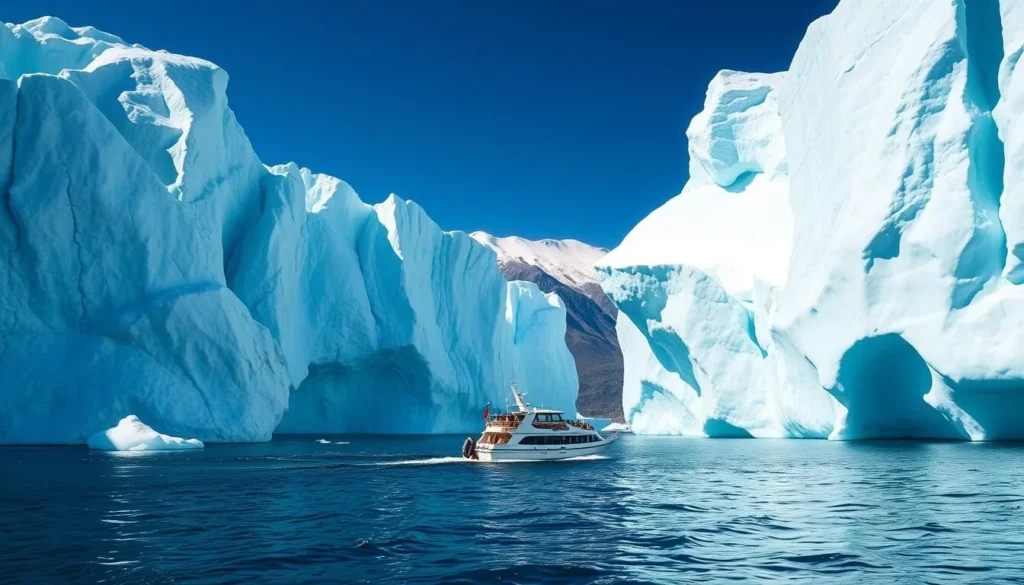
- Air Greenland operates domestic helicopter and fixed-wing flights between settlements.
- Arctic Umiaq Line provides coastal ferry service along the west coast during ice-free months (April-December).
- Local boats are available for charter in most coastal communities.
- Hiking is possible between some settlements in summer, but requires experience and proper equipment.
Weather significantly impacts all transportation options. Flight delays and cancellations are common due to fog, wind, or snow conditions. Always build flexibility into your itinerary and consider travel insurance that covers weather-related disruptions.
Where to Stay
Accommodation options in Greenland are limited but varied, ranging from international-standard hotels to guesthouses and hostels. Advance booking is essential, especially during the peak summer season.
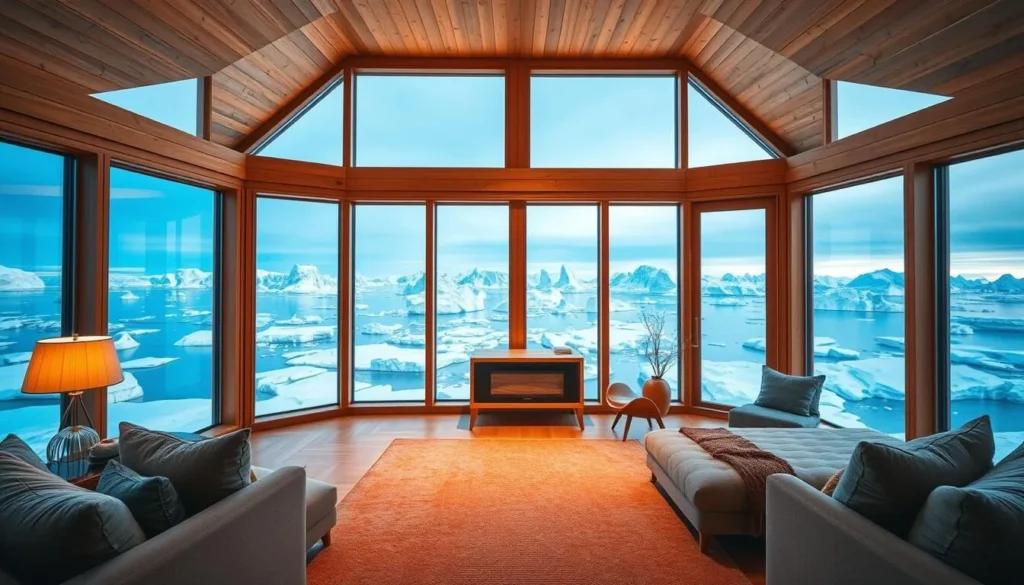
Hotels
Found in larger settlements like Nuuk, Ilulissat, and Sisimiut. Most are small by international standards but offer comfortable rooms and restaurants. Hotel Arctic in Ilulissat and Hans Egede Hotel in Nuuk are among the best options.
Weather consideration: Year-round operation with heating systems designed for Arctic conditions.
Guesthouses & B&Bs
Common throughout Greenland, offering more authentic experiences. Quality varies, but many provide shared kitchens and local hosts who can offer weather insights and activity recommendations.
Weather consideration: Some smaller guesthouses may close during winter months.
Unique Stays
Wilderness camps, glacier lodges, and converted trading posts offer unforgettable experiences. Options like Glacier Lodge Eqi and wilderness camps near Kangerlussuaq provide close-to-nature accommodation.
Weather consideration: Most operate only during summer months due to weather accessibility.
Find Your Perfect Greenland Stay
Book accommodation that suits your travel style and weather preferences.
Dining & Local Cuisine
Greenlandic cuisine is heavily influenced by the hunting and fishing culture, with seafood and game meat featuring prominently. The harsh climate means fresh vegetables and fruits are limited and often imported.

Weather-Influenced Seasonal Specialties
- Summer: Fresh fish (Arctic char, halibut), whale meat, musk ox, crowberries and blueberries
- Winter: Dried fish, mattak (whale skin), seal meat, caribou stews
- Year-round: Suaasat (traditional soup), imported Danish pastries and breads
Restaurants in larger towns like Nuuk and Ilulissat offer international cuisine alongside traditional dishes. In smaller settlements, dining options may be limited to a single restaurant or café, often with menus dependent on recent hunting and fishing success.
Weather Tip: Restaurant supplies in remote areas depend on weather conditions for deliveries. Menu options may be limited after periods of bad weather that prevent supply flights or boats from arriving.
Attractions, Sightseeing & Activities
Greenland’s attractions are deeply tied to its natural environment and are highly seasonal. Weather conditions not only determine which activities are possible but also dramatically transform the landscape throughout the year.
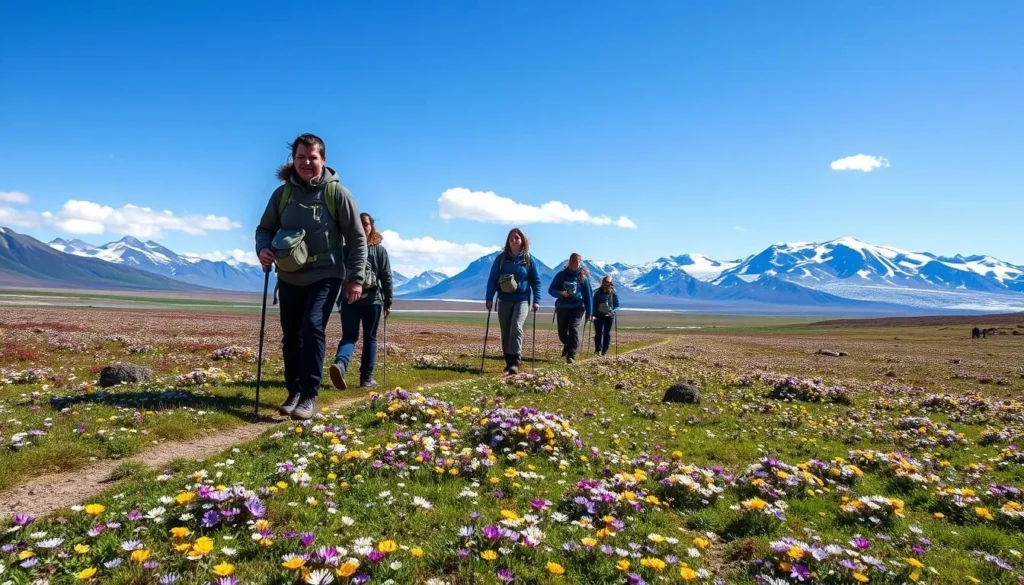
Summer Activities (June-August)
- Ilulissat Icefjord boat tours (UNESCO World Heritage Site)
- Midnight sun experiences
- Whale watching (humpback, minke, fin whales)
- Hiking the Arctic Circle Trail
- Kayaking among icebergs
- Helicopter tours over the ice sheet
Winter Activities (December-March)
- Northern Lights viewing
- Dog sledding expeditions
- Ice fishing
- Snowmobiling
- Winter photography
- Hot spring visits (Uunartoq in South Greenland)
Shoulder Season Activities
- Spring (April-May): Dog sledding, snowshoeing, bird watching
- Autumn (September-November): Northern Lights, hiking (early autumn), photography of fall colors
Explore Greenland’s Natural Wonders
Book guided experiences led by local experts who understand Greenland’s weather patterns.
Explore Greenland by Sea
Experience Greenland’s coastal wonders on an expedition cruise during the ice-free summer months.
Museums, Cultural Spots & Festivals
Greenland’s cultural attractions offer insight into how Inuit communities have adapted to the extreme climate over thousands of years. Many cultural events are timed to coincide with seasonal changes.
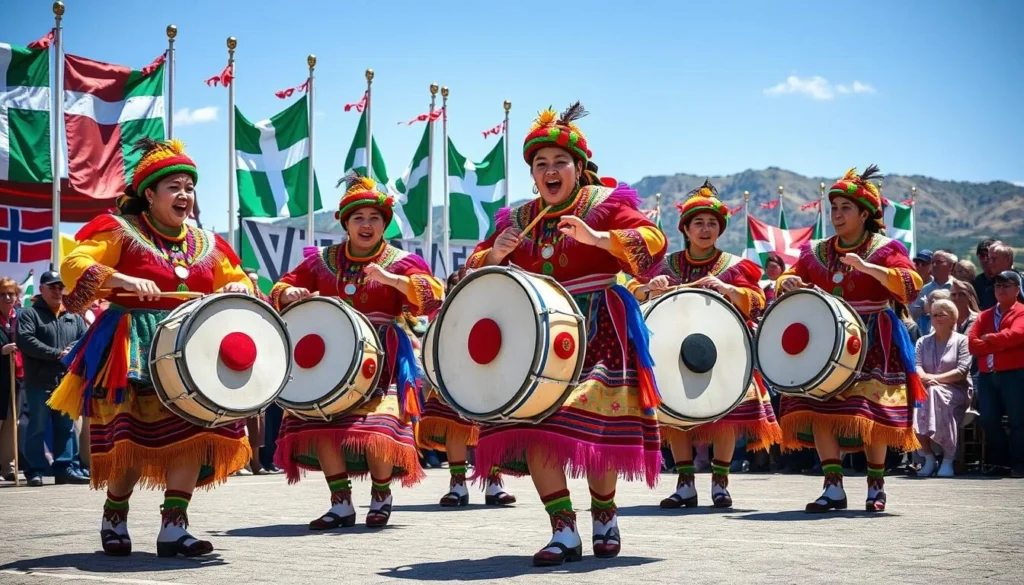
Weather-Influenced Cultural Experiences
Museums & Cultural Centers
- Greenland National Museum (Nuuk) – Exhibits on climate adaptation throughout history
- Ilulissat Museum – Located in explorer Knud Rasmussen’s birthplace
- Sisimiut Museum – Displays on traditional hunting and weather prediction methods
Seasonal Festivals
- National Day (June 21) – Coincides with summer solstice and midnight sun
- Return of the Sun Festival (January) – Celebrates the end of polar night
- Arctic Sounds Music Festival (April, Sisimiut) – Marks the return of spring
Many cultural experiences, particularly those involving traditional hunting or fishing demonstrations, are weather-dependent. Museums provide reliable cultural insights regardless of weather conditions.
Sports, Nature & Outdoor Experiences
Greenland offers extraordinary outdoor experiences that vary dramatically with the seasons. The weather not only determines which activities are possible but also transforms the landscape throughout the year.
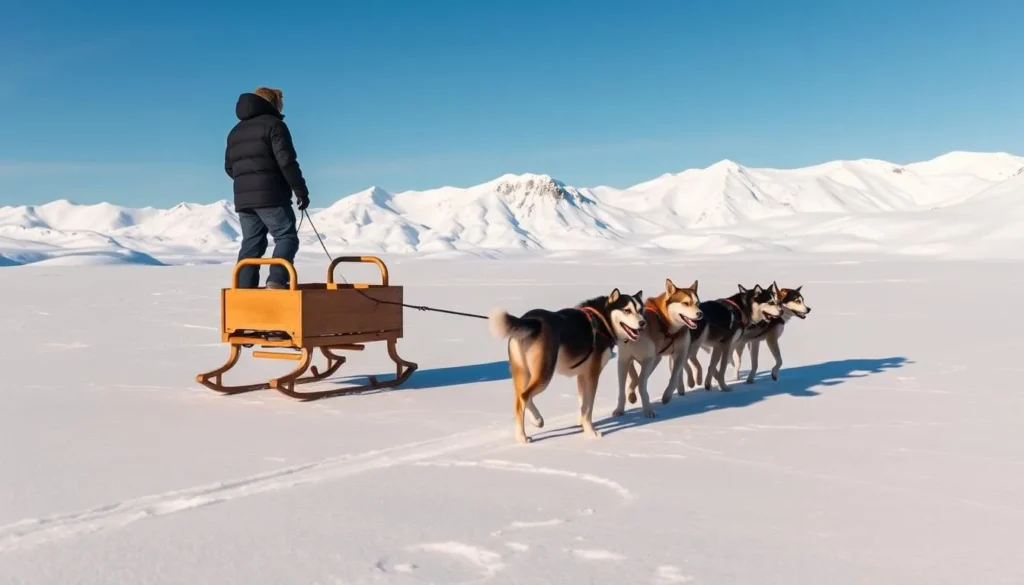
Weather-Dependent Natural Phenomena
| Phenomenon | Best Time | Location | Weather Requirements |
| Northern Lights | September-April | All of Greenland, best away from settlements | Clear, dark skies; no cloud cover |
| Midnight Sun | May-July | Above Arctic Circle (Ilulissat, Uummannaq) | Clear skies for best viewing |
| Calving Glaciers | June-August | Ilulissat Icefjord, Eqi Glacier | Any conditions, but better visibility on clear days |
| Whale Watching | June-September | Disko Bay, South Greenland fjords | Calm seas, minimal wind |
Weather Safety: Greenland’s weather can change rapidly. Always check forecasts before outdoor activities, inform someone of your plans, and carry appropriate emergency gear.
Safety, Etiquette & Local Customs
Weather awareness is a fundamental aspect of safety in Greenland. Local customs and etiquette have evolved in response to the challenging climate.
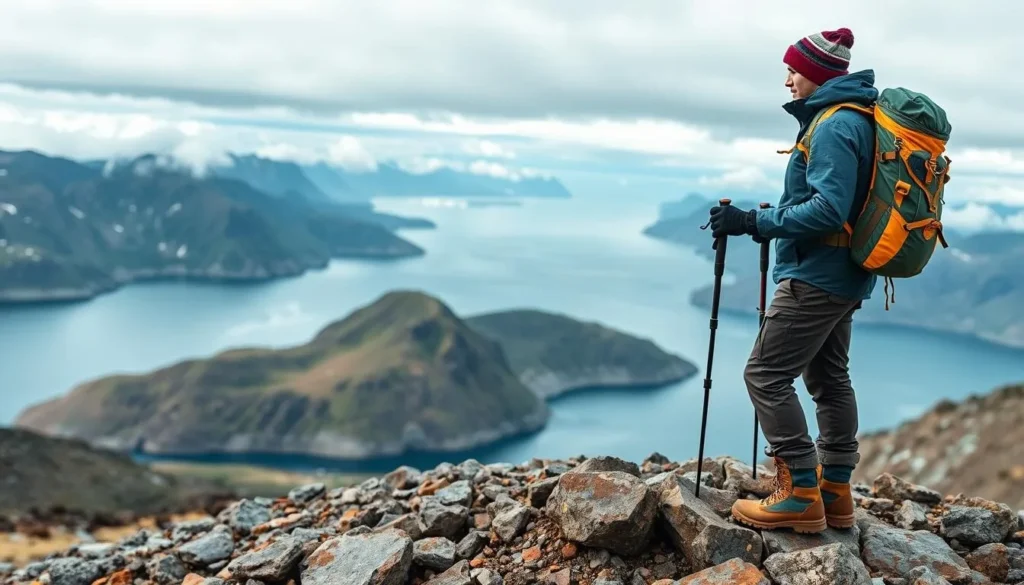
Weather-Related Safety
- Always check weather forecasts before activities and heed local warnings
- Dress in layers – conditions can change rapidly even in summer
- Inform accommodations of your plans when hiking or exploring
- Carry emergency supplies including extra warm clothing
- Respect closures and warnings – they exist for your safety
Local Customs
Greenlanders have deep respect for nature and weather. Traditional knowledge about weather patterns is highly valued. When visiting:
- Remove shoes when entering homes (a practice developed to keep snow outside)
- Accept weather delays gracefully – locals understand that nature dictates schedules
- Listen to local advice about weather conditions and appropriate activities
- Participate in weather-related conversations – discussing conditions is a common social activity
Practical Travel Tips
These practical tips will help you navigate Greenland’s unique weather challenges and make the most of your visit regardless of when you travel.
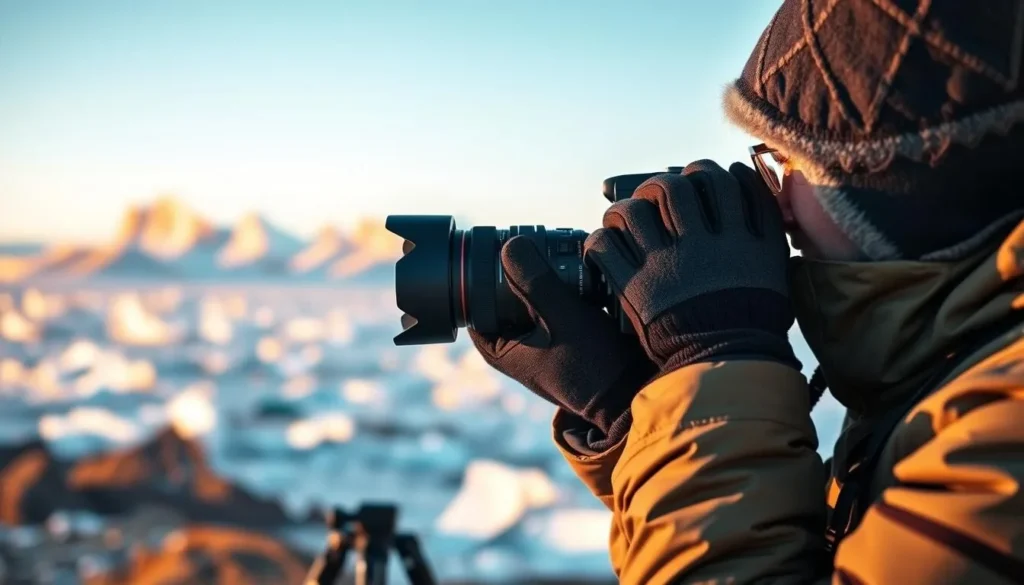
What should I pack for Greenland’s weather?
Regardless of season, pack layers including:
- Base layers (merino wool or synthetic)
- Mid-layers (fleece or down)
- Waterproof/windproof outer shell
- Waterproof hiking boots
- Hat, gloves, and neck gaiter
- Sunglasses and sunscreen (even in winter – snow reflection)
- Mosquito repellent (summer)
How do I prepare for weather-related travel disruptions?
- Build buffer days into your itinerary
- Purchase comprehensive travel insurance
- Book flexible accommodations when possible
- Carry extra medication and essential supplies
- Have backup plans for activities
How accurate are weather forecasts in Greenland?
Weather forecasts in Greenland are generally reliable for 24-48 hours but become less accurate beyond that timeframe. Local sources like DMI (Danish Meteorological Institute) provide the most accurate forecasts. Always check with local tour operators or accommodation providers for current conditions.
Ready for Your Greenland Adventure?
Start planning your weather-savvy trip to this Arctic wonderland.
Conclusion
Greenland’s weather creates both challenges and extraordinary opportunities for travelers. By timing your visit wisely and preparing appropriately, you can experience the midnight sun illuminating massive icebergs, witness the ethereal dance of the Northern Lights, or feel the exhilaration of dog sledding across pristine snow. Whether you choose the accessibility of summer or the mystical atmosphere of winter, Greenland’s weather-shaped landscapes promise an adventure unlike any other on Earth. The best time to visit is waiting for you – will it be under the midnight sun or the dancing aurora?
The above is subject to change.
Check back often to TRAVEL.COM for the latest travel tips and deals.
